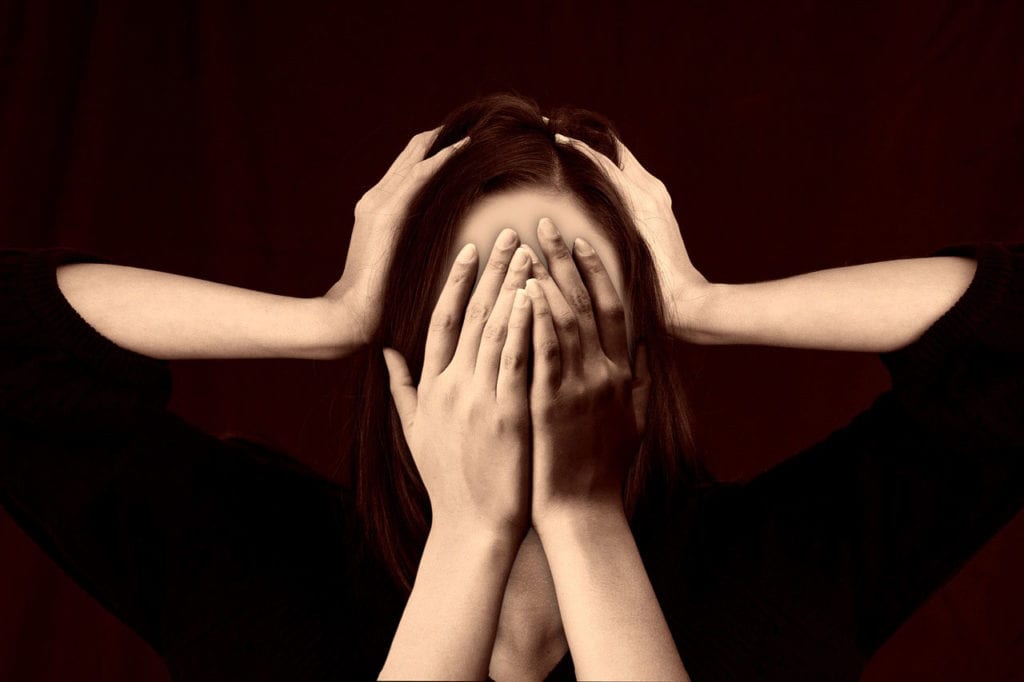If you suffer with anxiety, you know just how crippling it can be.
Anxiety* is actually a natural response to our environment that is designed to protect us from danger. However, it can get out of control where it can become chronic and run our lives. I know all too well how terrible this feels. For years, anxiety impacted my life to such an extent that it took every ounce of courage just to go outside the house, let alone go anywhere. I hope the tools I share for coping with and hopefully overcoming your anxiety, including panic attacks, are of help to you.
When my anxiety was at its worst, my heart would pound, my body would shake, I felt weak all over, my palms would sweat like crazy, I would get very dizzy, I was unable to concentrate (and sometimes speak), and it felt like I would pass out. Just the thought of these things happening kept me from leaving home unless I absolutely had to go somewhere. On numerous occasions I thought I was having a heart attack. It was especially bad when I was driving, which was one of my main triggers for panic attacks.
I have worked through a lot of my anxiety using the tools below (and those found in my book, Diagnosis Dystonia: Navigating the Journey), so I hope you find comfort knowing that you too can learn to cope better and overcome it. I still have anxiety, but it is not near as bad as it once was, and I can’t recall the last time I had a panic attack. I am certainly not out of the woods, but I am in much better control most of the time. I want the same for you because it feels like torture and I want to help you end your suffering.
What exactly is anxiety?
Anxiety is the apprehension, uncertainty, and fear one feels when anticipating a threatening event or situation, whether the threat is real or imagined. It is often accompanied by restlessness, problems concentrating, muscle tension, and fatigue. Put simply, anxiety is an unpleasant state of inner turmoil. Panic attacks often accompany an anxious, stress filled life.
Anxiety is actually a normal, instinctive and automatic human emotion that everyone experiences at times. It is a temporary call to action to fight or flee to keep us safe in the face of danger. However, when worry and fear are constant, a person gets caught in fight, flight or freeze mode, which can be disabling. The most seemingly harmless stimuli, thought, event, etc., can be overwhelming, making it feel impossible for the brain to slow down to relax the body.
If you live with another health condition, dystonia and chronic pain in my case, you might be more prone to anxiety. We tend to live in a heightened neurological state, also known as sympathetic dominant. This means we are more sensitive to stress, causing us to react to things that our nervous system views as more threatening than they really are. This is where many of us need the most work because it is our reaction to life events that determine the extent to which we experience anxiety.
For example, whenever we have an unpleasant physical sensation, such as pain, if we react to it in an alarming way, the body produces more stress hormones and adrenaline, which worsens the pain because of increased muscle tension. By living in this heightened state of stress, it keeps anxiety and pain alive. Tensing up then becomes habitual and we forget how to relax, keeping us in a chronic state of anxiety where it is impossible for healing to take place. When we instead learn to flow with the pain and not react to it as something to fear, our anxiety levels are lowered.
As a life coach, most of the people I work with have chronic health conditions, whether it is just anxiety, or another condition along with anxiety. Often times, these individuals never had an anxiety disorder prior to developing their other health condition. A tool I find very helpful for myself and my clients is called AWARE, an acronym for dealing with anxiety from the book, Anxiety Disorders and Phobias: A Cognitive Perspective, by Aaron Beck and Gary Emery.
A: Accept the anxiety. Welcome it. Don’t fight it. Replace your rejection, anger, and hatred of it with acceptance. By resisting, you are prolonging the unpleasantness of it. Instead, flow with it. Don’t make it responsible for how you think, feel, and act.
W: Watch and Wait. Look at your anxiety without judgment. It’s neither good nor bad. Become detached from it. Remind yourself that you are not your anxiety. The more you can separate yourself from the experience, the more you can view it as a third party observer.
Even though there is a powerful urge to run away to try and escape anxious situations, postpone that decision for a little bit. Stay in the situation. Don’t tell yourself you can’t leave. Keep that option open so you don’t feel trapped, but remember that you don’t need to run away to get relief. Let relief come to you.
A: Act with the anxiety. Act as if you aren’t anxious. Function with it. Slow down if you have to, but keep going. Breathe normally. If you run from the situation your anxiety will go down, but your fear will go up. If you stay, both your anxiety and your fear will eventually go down.
R: Repeat the steps. Continue to accept your anxiety, watch it, and act with it until it goes down to a comfortable level.
E: Expect the best. What we fear rarely happens. Recognize that a certain amount of anxiety is a normal part of life. Understanding this puts you in a good position to accept it if it comes again. You are familiar with it and know what to do with it.
The first several times you try this you might not notice much. Your anxiety may even get worse for a little while. Eventually, the more you practice, the greater your ability to harness the strength of your powerful mind and make it work more in your favor. You will learn that you will always have what it takes and that anxiety is a feeling that comes and goes, just like the weather. Along with using the AWARE strategy above, coping statements can be very helpful. Check them out at The Anxiety Network. It is also helpful to use affirmations which are described in more detail in another article I wrote. Please click here to read it.
I know from personal experience that all of this is SO MUCH easier said than done which is why it needs to be a daily practice with steadfast dedication. Changing our mindset involves small, repeated steps. Each step builds on the one before it, and this takes time. We must be dedicated to change so learn to be okay with this. There is no rush. Remember that your mind has been doing what it has for a while and it will take time to unlearn its habits. When we are anxious, everything feels like an emergency. If we remember that every feeling of panic comes to an end; every concern wears itself out; and every so-called emergency evaporates, we can keep our nerves calmer.
Resources:
Hope and Help for your Nerves by Dr. Claire Weekes
Pass Through Panic by Dr. Claire Weekes
Reversing Chronic Pain by Maggie Phillips
Mindfulness for Beginners by Jon Kabat-Zinn
Anxiety Disorders and Phobias: A Cognitive Perspective by Aaron Beck and Gary Emery
Diagnosis Dystonia: Navigating the Journey by Tom Seaman
What are your thoughts on Tom’s advice for anxiety? Share your stories, thoughts, and hopes with the Patient Worthy community!
*The statements here are not meant to replace seeking professional or clinical help. They are the opinions of the Patient Contributor only.





